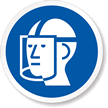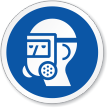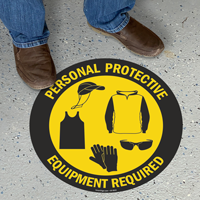Using Eye Protection in Healthcare Settings
The first patent for eye protection which was a sanitary face shield was granted to Ellen Dempsy of Albany, New York, in 1903. It was primarily invented for “automobilists” but it was also intended to protect people from breathing in airborne germs.
Today the need for PPE is even more pronounced as healthcare providers are exposed to newer diseases. There is a heightened risk of exposure to blood and infectious body fluids transferred from patients infected with bloodborne viruses, like HIV, Hepatitis B, and Hepatitis C to healthcare workers through the mucous membranes.
According to the Centers for Disease Control, “Infectious agents are introduced to the eye either directly (e.g., blood splashes, respiratory droplets generated during coughing or suctioning) or from touching the eyes with contaminated fingers or other objects.” Anytime there’s a chance of that happening, workers must protect themselves with appropriate PPE.
Even with this high risk, eye protection is often neglected, especially among nurses. According a study in the American Journal of Infection Control, nurses cited two reasons (among others for overall face protective gear) for not wearing eye PPE:
- It impeded their vision
- They were already wearing glasses and didn’t think they needed eye protection.
According to OSHA, non-use of eye protection is one of the primary reasons for eye injuries and transmission of infectious material.
When should a healthcare worker wear eye protection?
It should be noted that eye protection for healthcare workers does not limit to safety glasses but includes face shields too. Respirators–although they have special application–by their design provide effective eye protection as well, and should be used when necessary. A combination of PPE is advised in healthcare settings.
 Safety Goggles
Safety Goggles
Safety goggles protect the eyes, eye sockets, and the facial area immediately surrounding the eyes. Indirectly-vented or non-vented goggles prevent splashes, sprays, and respiratory droplets. Anti-fog safety goggles offer the most practical and reliable use. Goggles with indirect airflow also reduce fogging. Some newer goggles also provide better peripheral vision.
Safety goggles must fit snugly even over prescription glasses with minimal gaps.
When to use: Safety goggles do not provide protection against splashes and sprays to the whole face so they have limited application in irrigating wounds, suctioning secretions, and procedures where blood may spurt. Face shields are a preferred option.
 Face Shields
Face Shields
Face shields are a common alternative to safety goggles and have several advantages over other forms of eye protection. In workplaces with chemical exposure and some industrial settings, face shields should be used with (and not as substitute to) goggles.
A face shield should wrap around the face till the ear which reduces the possibility of a splash reaching the eyes from the edges. It should also protect the crown and chin.
When to use: Some of the medical procedure where face shields should be used is during suctioning oral secretions, while responding to emergency where blood is spurting, and when irrigating a wound.
 Respirators
Respirators
Commonly used respirators in healthcare settings include N95, N99, and N100 particulate respirators. These respirators have a sub-micron filter that can even exclude particles less than 5 microns in diameter.
When to use: The nature of the job will determine the type of respirators to be used. For example, a N95 particulate respirator may be worn by personnel entering a room with a TB patient. In another case, an air-purifying respirator or PAPR may be needed when performing a bronchoscopy.
How to wear and remove safety goggles or a face shield
CDC advises healthcare personnel to wear and remove eye and face protection safely
Wearing
- Place goggles over eyes and use the headband secure the goggles to the head.
- Place face shield over face and use the headband to secure it on the brow.
- Adjust for exact fitting.
Removing
- Hold ear or head pieces with ungloved hands.
- Lift away from face.
- Dispose of the PPE in receptacles designated for that purpose.
Wash hands or use an alcohol based sanitizer after removing PPE and if your hands get contaminated during removal of PPE.
CDC also provides guidelines on how to wear and remove of other kinds of PPE.
Category: Resources
















